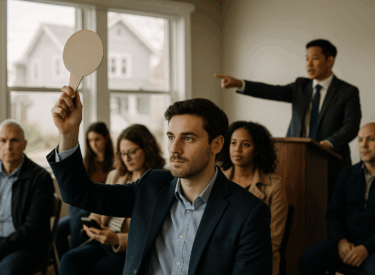When making any type of property purchase, it is very important to buy the property below its "Intrinsic Value."
I want to stress, that buying below a property's Intrinsic Value is very different from buying below the Market Value of a property.

Buying below Market Value
Buying below "Market Value" has massive appeal for owner-occupiers and investors alike, the sense of achievement in securing a perceived “bargain” may be very rewarding.
An instant hit of equity can be very enticing from a short-term perspective.
But if you are measuring the overall success of your purchase by the amount of discount you were able to achieve for a certain property, you are only focussing on a very small piece of the bigger picture.
“Bargains” are generally purchased in inferior locations where either demand is very low or supply is very high or they are a bargain for some other reason.
It is almost always due to a lack of demand and overall, these properties will underperform over the longer term.
Buying below Intrinsic Value
Let me introduce this concept to you to start with.
It is simply another way of saying buy below replacement cost or buy the property for less than what it would cost to replace it brand new.
If you buy a brand-new car tomorrow and drive it out of the showroom, you may lose around 5% - 10% of the purchase price instantly.
It is the same if you are buying a property brand new or off the plan.
You are paying a premium made up of developers' costs, advertising costs, and agents' fees, etc.
You are effectively giving that for 5% - 10% away to them rather than potentially using it to expand your own portfolio.
How to buy below Intrinsic Value
A good rule of thumb here is to ensure that the higher part of the purchase price is the actual land value vs the value of the actual house itself.
It should look something like this;

For a purchase of $800,000, if the land value was worth $600,000, then the value of the house would effectively be worth $200,000.
To replace the property or to build new, the new cost could potentially be between $300,000 - $400,000, so you have purchased below replacement cost.
Importantly, you also have a higher portion of your investment – the land, appreciating, and the lower portion – the house, depreciating.
If we reversed the situation, $600,000 would be depreciating, while the land value of $200,000 is appreciating.
The higher the demand for land, the faster it will appreciate, which is why high capital growth suburbs always have a premium land value.
Case Study – Which would you choose?
Let’s look at two properties priced at $600,000, that we were holding for a decade.
Property A we will call the “bargain” property as we're able to buy at a discount from the purchase price of $560,000, even though the valuation came back to $600,000.
So, we purchased below Market Value and now have an initial profit of $40,000, being a lower demand location though and lower land portion, the annual average capital growth is around 4% per annum.
Property B we will call the “high demand” property.
But because it was in a high-demand location, we had to pay $620,000, with a valuation of $600,000 – we overpaid due to scarcity and competition.
But Property B was purchased below Intrinsic Value as per the recommendations above.
So, here we overpaid by $20,000 to secure the property, but being a high demand location and a higher intrinsic land value, it will average 7% per annum capital growth.
Let’s look at how it plays out over the next 10 years and after we have included the $40,000 made for buying a bargain initially and taking out $20,000 for paying too much;
| Pur Price | Growth | After 10 years | Initial cost | Profit | |
| Below Market | 560,000 | 4% | $888,147 | 40,000 | 328,146.6 |
| Below Intrinsic | 620,000 | 7% | $1,180,291 | -20000 | 560,291.0 |
| $232,144 |
The “below market” property with a value of $600,000 compounding at 4% per annum will be worth $888,147 in 10 years.
The “below intrinsic” property also valued at $600,000 compounding at 7% per annum would be worth $1,180,291 in 10 years.
After adjusting for initial costs, you are left with a difference of $232,144 over 10 years.
Summary
That is why you should always start your investment journey by focussing on the end game and where you would like to be in the next decade or two - minimum.
Falling for an initial boost in the short term may turn out to be a mistake over the longer term.
It should also highlight that buying a property below its intrinsic value and with a higher land value should be a priority.
Of course with the high cost of new construction present, there are many opportunities to buy properties below intrinsic value or replacement cost.
Particularly established family-friendly apartments in great inner suburban locations.














